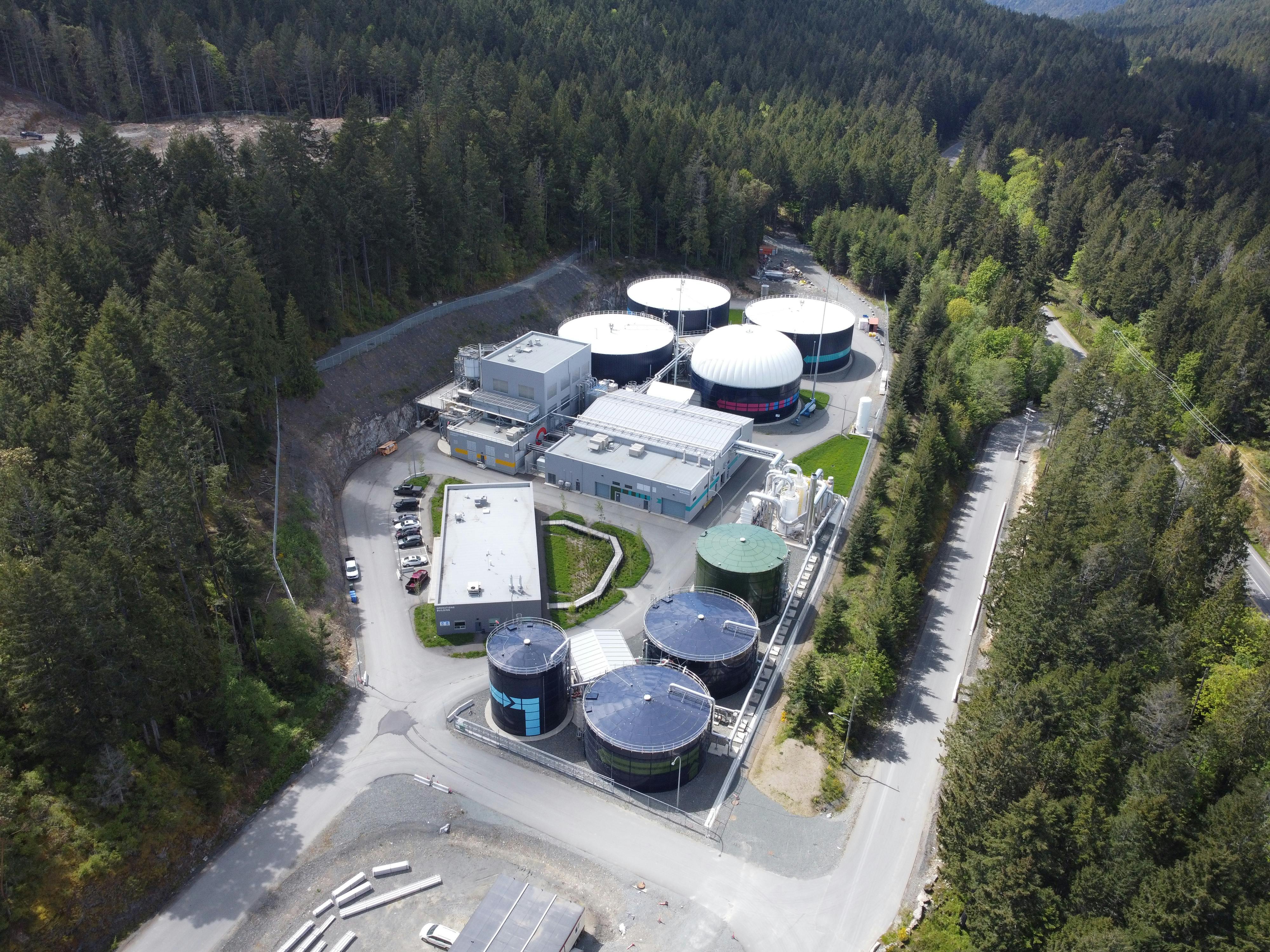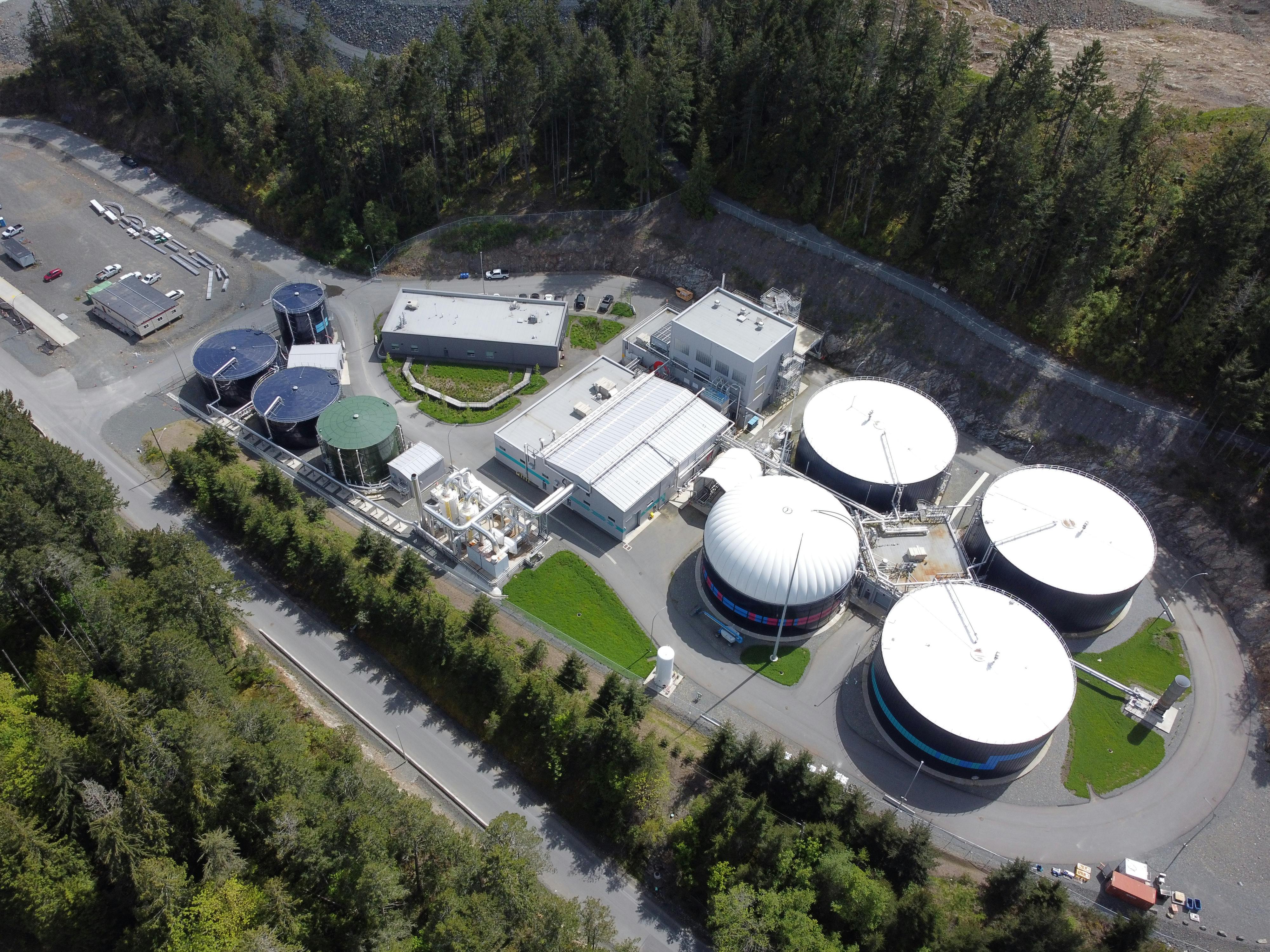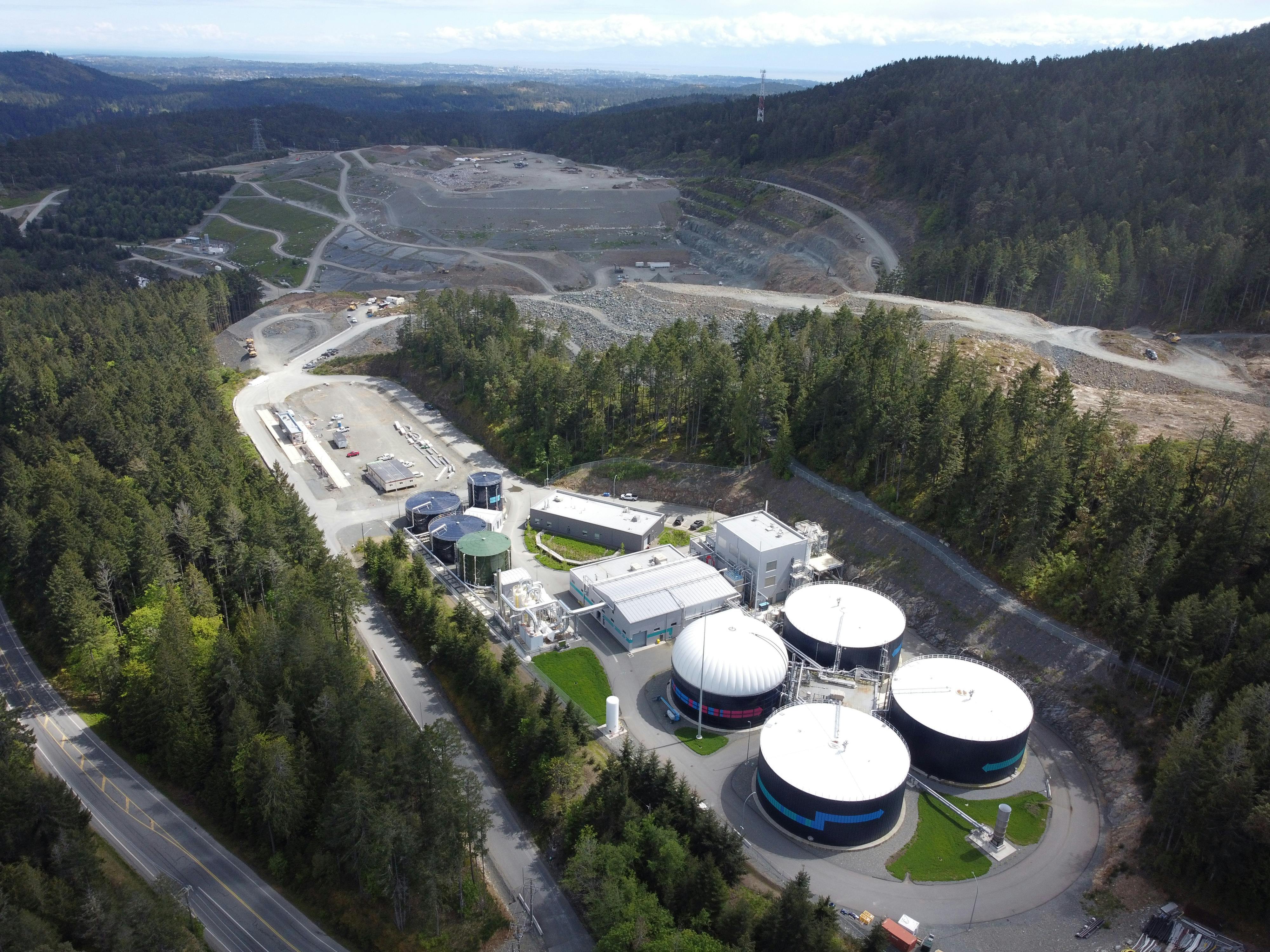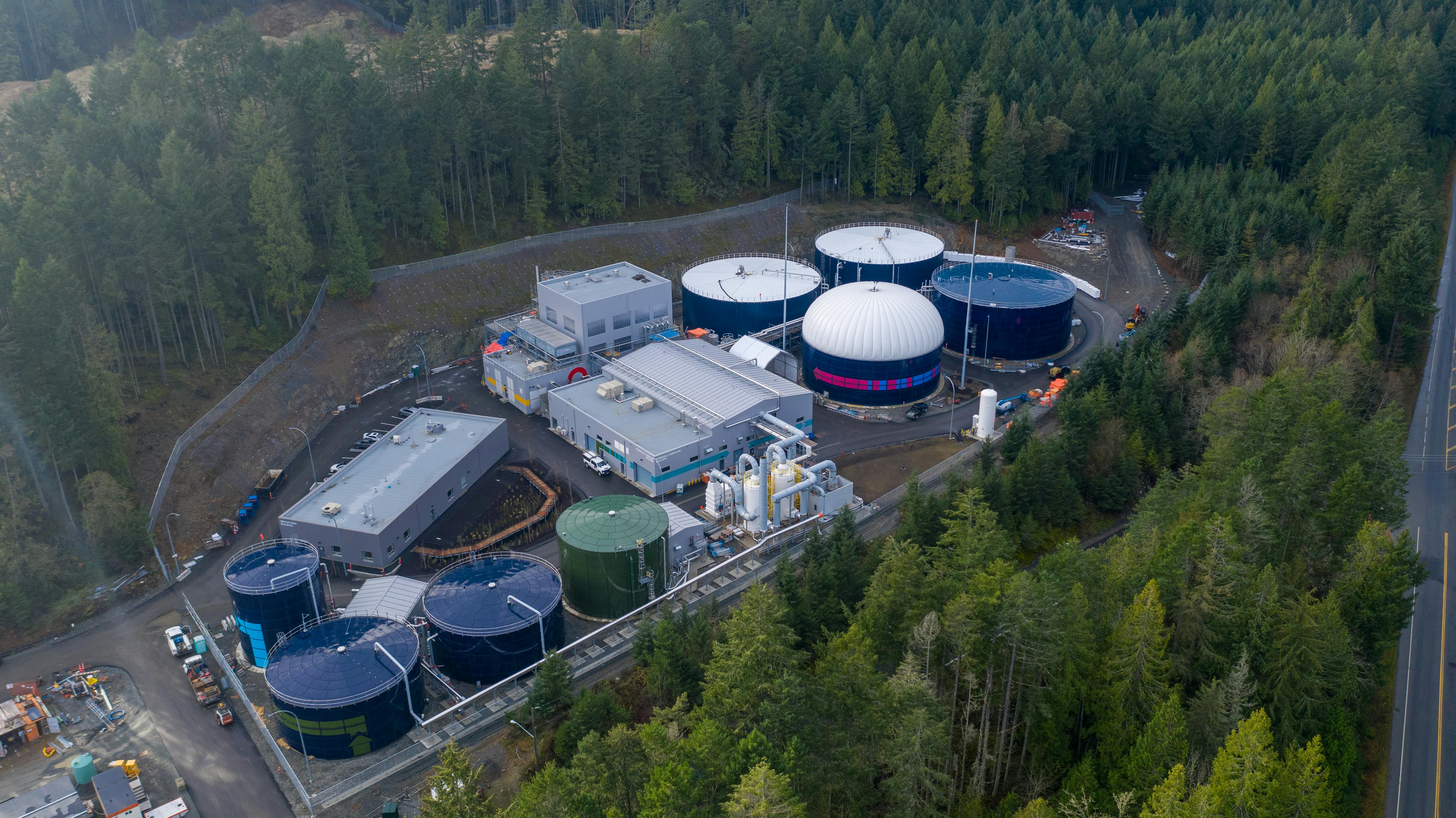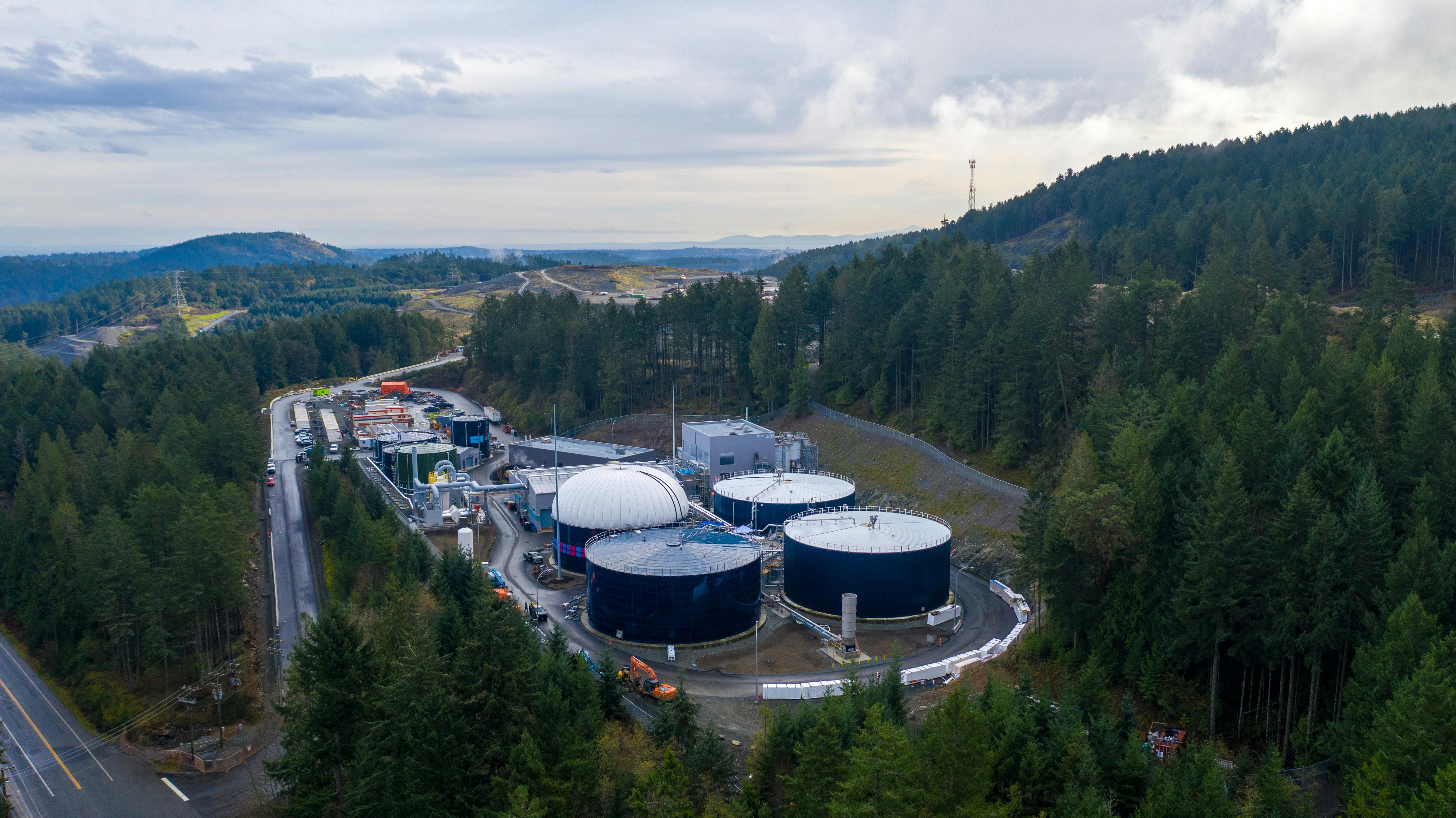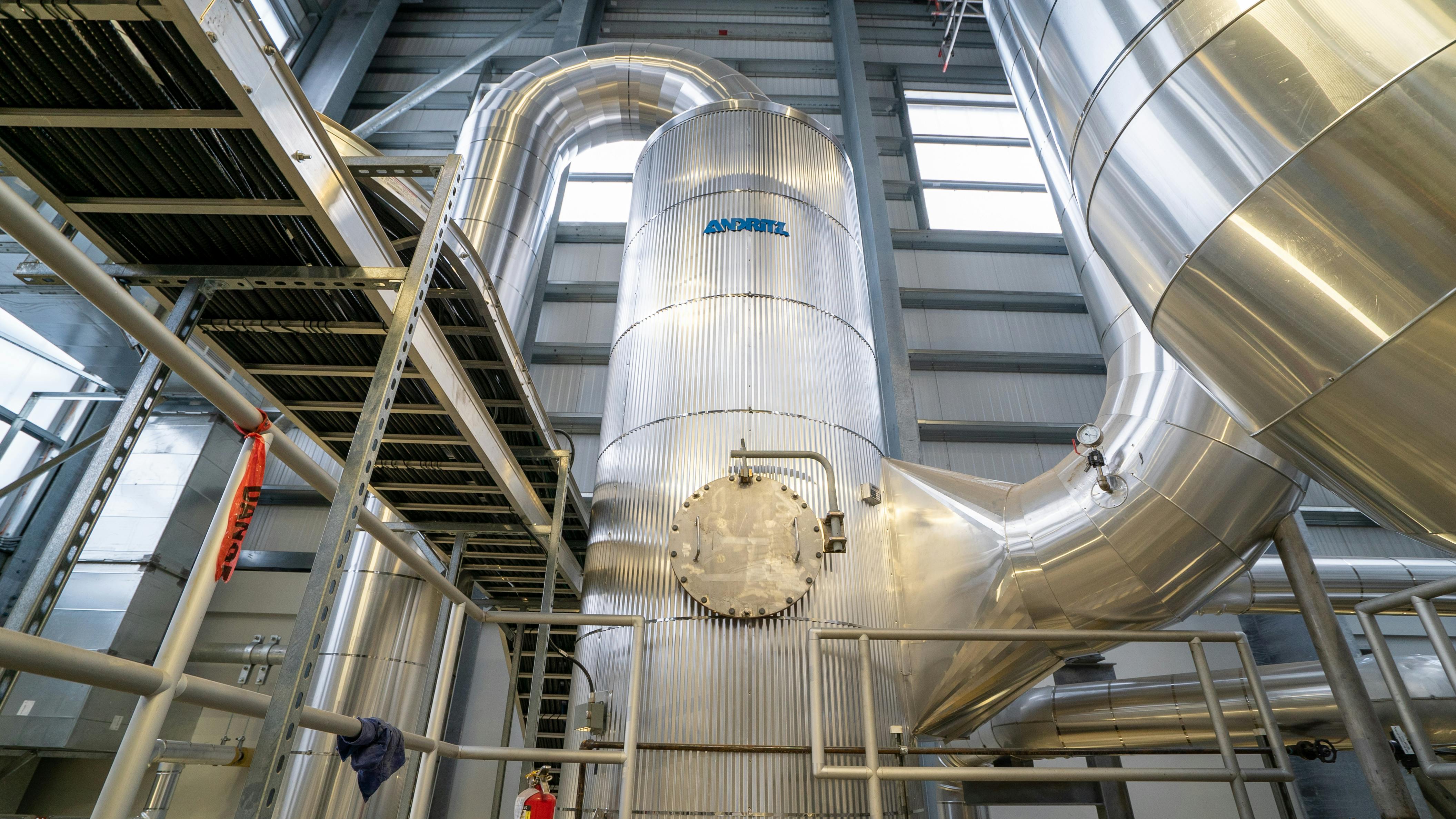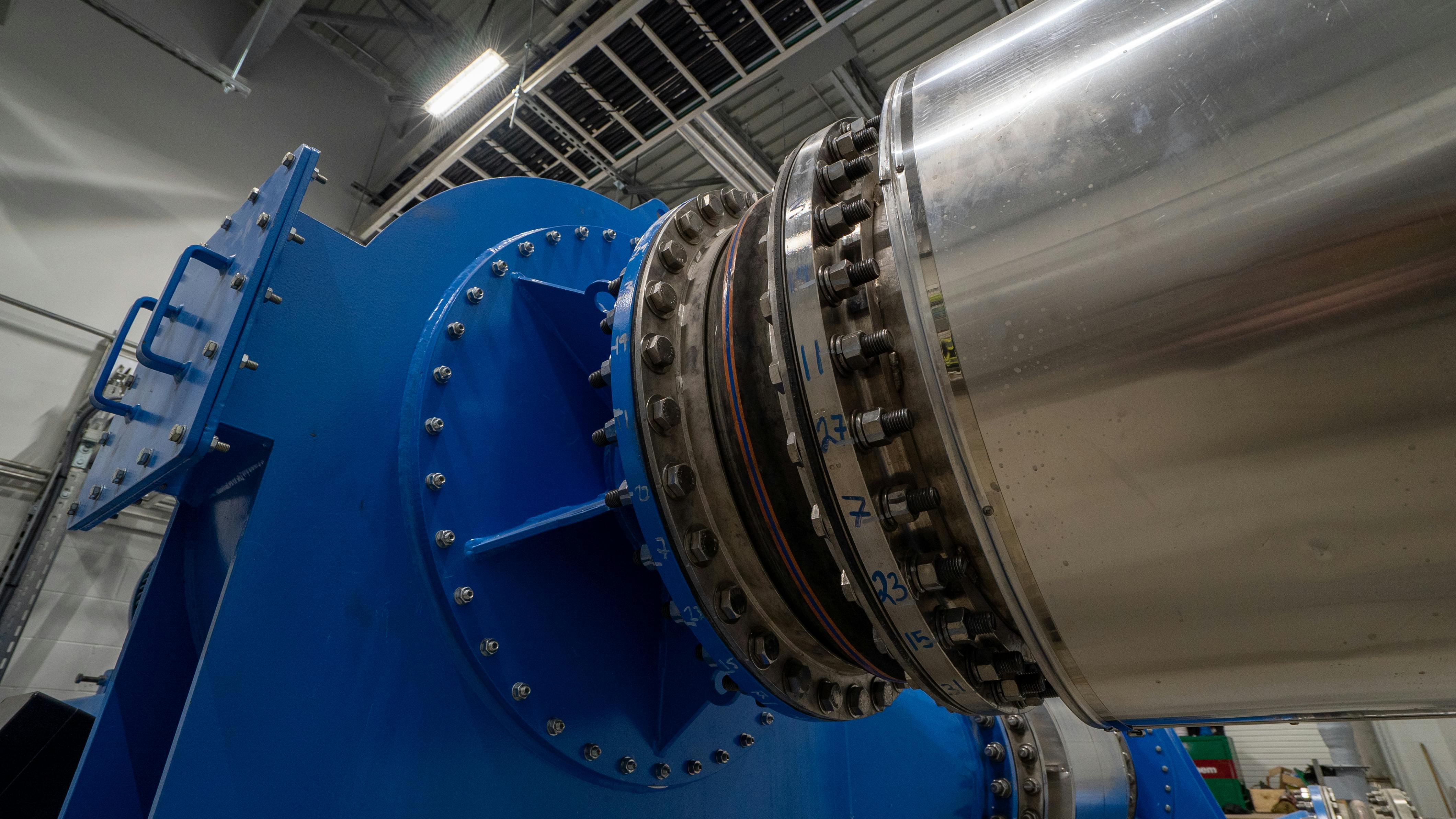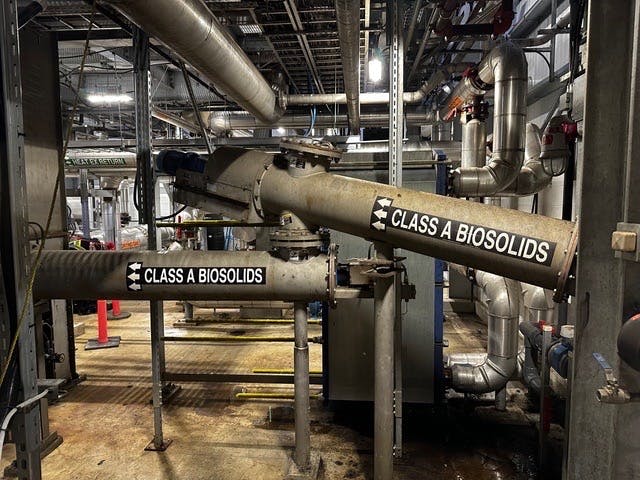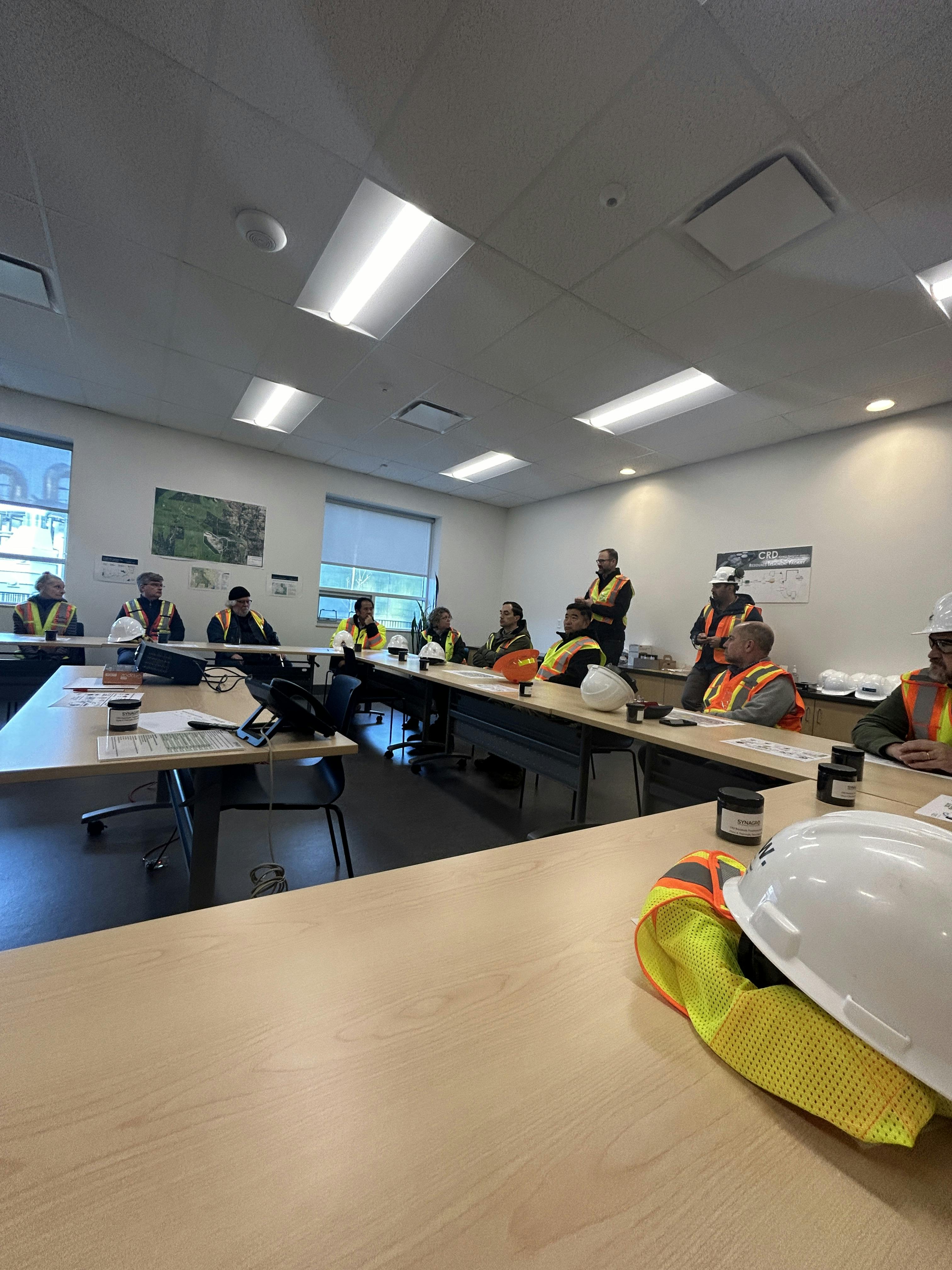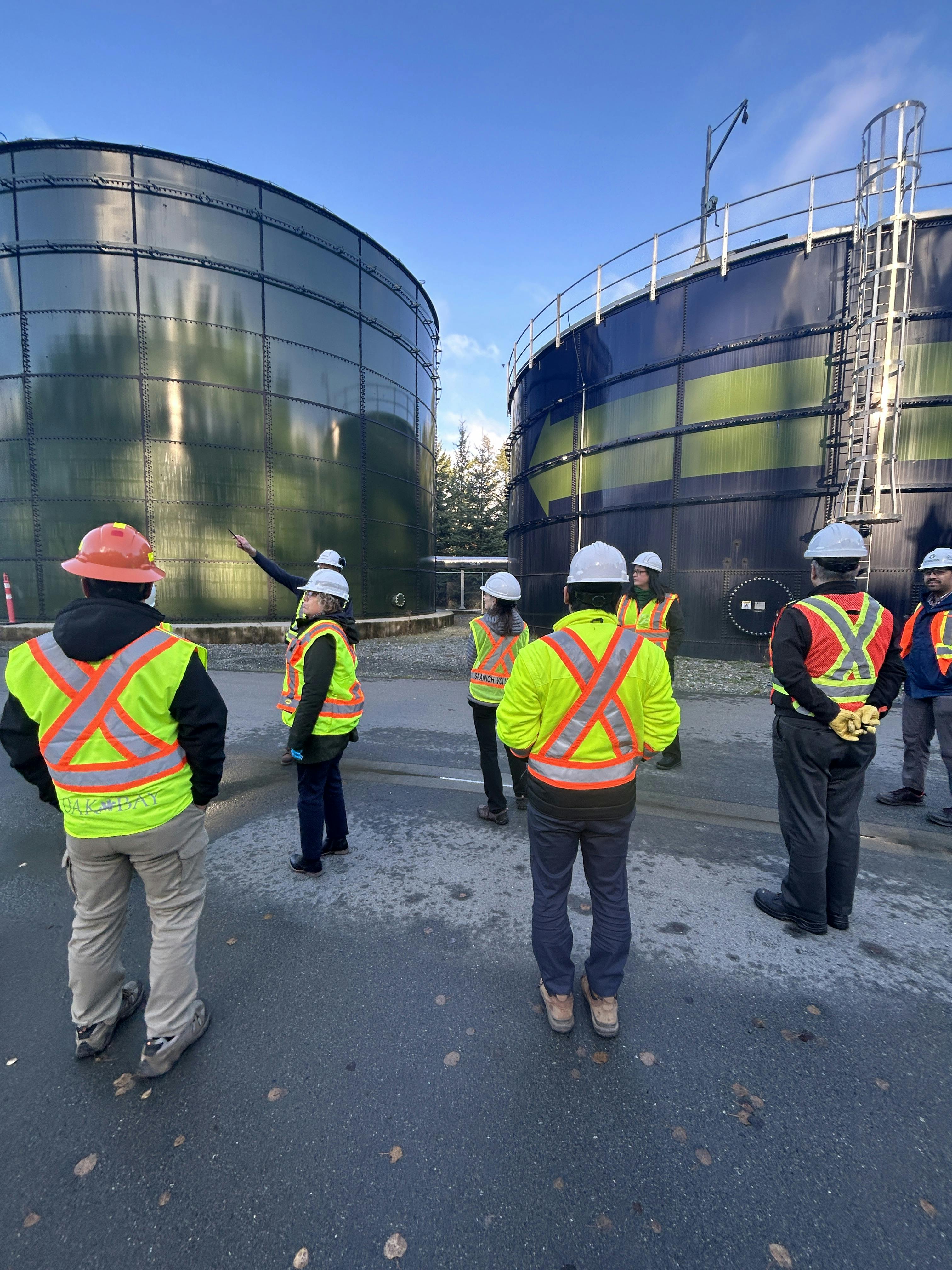Long-Term Biosolids Management Strategy
The public feedback period is now complete.
Thank you to everyone who shared comments on the Capital Regional District’s (CRD’s) draft Long-term Biosolids Management Strategy. The feedback period is now complete.
On June 12, 2024, after reviewing your feedback , the Capital Regional District Board approved the final Long-term Biosolids Management Strategy. This strategy outlines a sustainable approach to managing biosolids produced within the region and consists of a portfolio of options that prioritize advanced thermal processing while also considering out-of-region and in-region contingency options to ensure regulatory compliance and adaptability.
The Long-Term Biosolids Management Strategy is subject to provincial approval as part of the CRD’s commitments under the Core Area Liquid Waste Management Plan. On June 6, the CRD Board received a letter from the Minister of Environment and Climate Change Strategy offering an extension to the June 18 deadline. Because the conditions and timelines presented by the Minister pose a challenge, the Board decided that it was prepared to submit the strategy, along with feedback received, to the province in accordance with the original deadline.
Thank you to everyone who shared comments on the Capital Regional District’s (CRD’s) draft Long-term Biosolids Management Strategy. The feedback period is now complete.
On June 12, 2024, after reviewing your feedback , the Capital Regional District Board approved the final Long-term Biosolids Management Strategy. This strategy outlines a sustainable approach to managing biosolids produced within the region and consists of a portfolio of options that prioritize advanced thermal processing while also considering out-of-region and in-region contingency options to ensure regulatory compliance and adaptability.
The Long-Term Biosolids Management Strategy is subject to provincial approval as part of the CRD’s commitments under the Core Area Liquid Waste Management Plan. On June 6, the CRD Board received a letter from the Minister of Environment and Climate Change Strategy offering an extension to the June 18 deadline. Because the conditions and timelines presented by the Minister pose a challenge, the Board decided that it was prepared to submit the strategy, along with feedback received, to the province in accordance with the original deadline.
The public feedback period is now complete.
Thank you to everybody who submitted questions about the long-term biosolids management options. On May 8, 2024, the Capital Regional District Board endorsed a draft Long-term Biosolids Management Strategy. You can provide your feedback on the draft Strategy using the comment form from May 13 – June 3. Comments received will be presented to the CRD Board for consideration as part of the final approval process taking place on June 12, 2024.
-
Share What is the overall cost per dry tonne for the current biosolids management strategy (anaerobic digestion, drying, and landfill)? Does CRD consider other technologies to replace the current sludge treatment processes like anaerobic digestion or drying? And what are the main barriers to land application besides micropollutants? on Facebook Share What is the overall cost per dry tonne for the current biosolids management strategy (anaerobic digestion, drying, and landfill)? Does CRD consider other technologies to replace the current sludge treatment processes like anaerobic digestion or drying? And what are the main barriers to land application besides micropollutants? on Twitter Share What is the overall cost per dry tonne for the current biosolids management strategy (anaerobic digestion, drying, and landfill)? Does CRD consider other technologies to replace the current sludge treatment processes like anaerobic digestion or drying? And what are the main barriers to land application besides micropollutants? on Linkedin Email What is the overall cost per dry tonne for the current biosolids management strategy (anaerobic digestion, drying, and landfill)? Does CRD consider other technologies to replace the current sludge treatment processes like anaerobic digestion or drying? And what are the main barriers to land application besides micropollutants? link
What is the overall cost per dry tonne for the current biosolids management strategy (anaerobic digestion, drying, and landfill)? Does CRD consider other technologies to replace the current sludge treatment processes like anaerobic digestion or drying? And what are the main barriers to land application besides micropollutants?
HL asked over 1 year agoAt the Residuals Treatment Facility, the residual solids undergo anaerobic digestion in which microorganisms break down biodegradable material in the absence of oxygen and produce biogas. The water is removed, and the solid materials are heated to a very high temperature creating the highest standard of biosolids for use as fertilizer or energy generation. Biogas produced during the treatment process is collected and used to fuel the facility. There is no plan to replace the current residuals treatment process.
The cost to use the biosolids beneficially varies with the end destination of the product and can be anywhere between $60,000 to $240,000 per month.
In July 2011, prior to introducing wastewater treatment in the core area, the CRD Board passed a resolution to ban the production and land application of biosolids at CRD facilities and parks, and on farmland in the CRD, based on public health and environmental concerns raised by members of the public.
If you want to learn more about the current biosolids production and how it is being used from month to month you can find that information here: https://www.crd.bc.ca/about/data/biosolids-production
-
Share What documented research, analysis and input has the CRD staff obtained and produced that definitively and expressly guarantees that there will be 'no harm' from land-based disposal of sewage biosolids? on Facebook Share What documented research, analysis and input has the CRD staff obtained and produced that definitively and expressly guarantees that there will be 'no harm' from land-based disposal of sewage biosolids? on Twitter Share What documented research, analysis and input has the CRD staff obtained and produced that definitively and expressly guarantees that there will be 'no harm' from land-based disposal of sewage biosolids? on Linkedin Email What documented research, analysis and input has the CRD staff obtained and produced that definitively and expressly guarantees that there will be 'no harm' from land-based disposal of sewage biosolids? link
What documented research, analysis and input has the CRD staff obtained and produced that definitively and expressly guarantees that there will be 'no harm' from land-based disposal of sewage biosolids?
Skookumgrah asked almost 2 years agoEvery biosolids management option will have some level of risk, but risks for most options can be minimized. The safety of land application of biosolids has been evaluated by senior levels of government and is promoted by the Canadian Council of Ministers of the Environment (CCME) and the BC Ministry of Environment and Climate Change Strategy as a low-risk way to beneficially use biosolids. Risk can be managed by following best management practices, like setting appropriate application rates, applying at the appropriate time of year, and ensuring application is set-back a minimum distance from water courses and property lines.
The CCME has published a Guidance Document, which can be found here.
The provincial government has published a literature review on the risks of land application of biosolids that can be found here.
A literature review on the risks of applying biosolids to agricultural lands, prepared by Toronto Metropolitan University, can be found here.
-
Share What non biodegradable residues are in the effluent from the CRD sewage treatment plant (e.g. chemical, viral, bacterial, heavy metal etc)?What residues persist in CRD biosolids? on Facebook Share What non biodegradable residues are in the effluent from the CRD sewage treatment plant (e.g. chemical, viral, bacterial, heavy metal etc)?What residues persist in CRD biosolids? on Twitter Share What non biodegradable residues are in the effluent from the CRD sewage treatment plant (e.g. chemical, viral, bacterial, heavy metal etc)?What residues persist in CRD biosolids? on Linkedin Email What non biodegradable residues are in the effluent from the CRD sewage treatment plant (e.g. chemical, viral, bacterial, heavy metal etc)?What residues persist in CRD biosolids? link
What non biodegradable residues are in the effluent from the CRD sewage treatment plant (e.g. chemical, viral, bacterial, heavy metal etc)?What residues persist in CRD biosolids?
JP asked almost 2 years agoBiosolids are analyzed regularly for metals and pathogens. Results are published monthly on our website here.
The last stage of the treatment process is drying. Biosolids are heated to over 90 °C in a fluidized bed dryer. As a result, CRD biosolids contain almost no detectible levels of pathogens.
CRD biosolids have been analyzed for contaminants such as pharmaceuticals, and PFAS, and results show that concentrations are low, and that the potential for risk to human health and the environment is small.
CRD biosolids were analyzed for 58 of the most common pharmaceuticals. Of the 58, 28 were not detected. Of the 30 pharmaceuticals detected, all were reported in the parts-per-billion (ppb) range. In 2017, Metro Vancouver commissioned a risk assessment evaluating human exposure to eleven common pharmaceuticals through biosolids. The study concluded that the presence of low concentrations (parts-per-billion) of pharmaceuticals in biosolids was very unlikely to result in adverse health effects, and that it would take many thousands of years of working with biosolids to be exposed to the amount in a standard dose.
CRD biosolids were analyzed for 38 of the most common types of polyfluoroalkyl substances (PFAS) or “forever chemicals”. 24 types were not detected. Fourteen types of PFAS were detected in the parts-per-billion range. The Canadian Food Inspection Agency (CFIA) has announced its intention to protect farmland from PFAS contamination by setting a limit for PFOS, one of the most common type of PFAS, in biosolids used as fertilizer. The limit chosen by the CFIA as appropriate to protect agricultural land is 50 ppb. The concentration of PFOS in CRD biosolids is approximately 6 ppb.
-
Share How can we avoid accumulation of Persistent Organic Contaminants and Micro-plastics from application of Biosolids? Don't the reality of the persistence of such substances preclude any land application? on Facebook Share How can we avoid accumulation of Persistent Organic Contaminants and Micro-plastics from application of Biosolids? Don't the reality of the persistence of such substances preclude any land application? on Twitter Share How can we avoid accumulation of Persistent Organic Contaminants and Micro-plastics from application of Biosolids? Don't the reality of the persistence of such substances preclude any land application? on Linkedin Email How can we avoid accumulation of Persistent Organic Contaminants and Micro-plastics from application of Biosolids? Don't the reality of the persistence of such substances preclude any land application? link
How can we avoid accumulation of Persistent Organic Contaminants and Micro-plastics from application of Biosolids? Don't the reality of the persistence of such substances preclude any land application?
GM asked almost 2 years agoThe most effective way to reduce the amount of contaminants such as PFAS and microplastics in biosolids is to prevent these contaminants from entering wastewater in the first place. The Canadian government is currently considering limiting the use of PFAS in Canadian consumer products; some types of PFAS have already been phased out of production. Microplastics in biosolids can be reduced using microfibre filters on clothes washing machines to prevent this common type of microplastic from entering wastewater. France has introduced a requirement for all washing machines to include these filters from 2025.
The safety of land application of biosolids has been evaluated by senior levels of government and is promoted by the Canadian Council of Ministers of the Environment (CCME) and the BC Ministry of Environment and Climate Change Strategy as a low-risk way to beneficially use biosolids. Risk can be managed by following best management practices, like setting appropriate applications rates, applying at the appropriate time of year, and ensuring application is set-back a minimum distance from water courses and property lines.
-
Share As only part of the medications we consume are absorbed by the body, the balance ending up in the wastewater stream, have the biosolids been analyses for pharmaceuticals and if so what are the results. Also are the biosolids analysed for chemical contaminants and if so what are the results. on Facebook Share As only part of the medications we consume are absorbed by the body, the balance ending up in the wastewater stream, have the biosolids been analyses for pharmaceuticals and if so what are the results. Also are the biosolids analysed for chemical contaminants and if so what are the results. on Twitter Share As only part of the medications we consume are absorbed by the body, the balance ending up in the wastewater stream, have the biosolids been analyses for pharmaceuticals and if so what are the results. Also are the biosolids analysed for chemical contaminants and if so what are the results. on Linkedin Email As only part of the medications we consume are absorbed by the body, the balance ending up in the wastewater stream, have the biosolids been analyses for pharmaceuticals and if so what are the results. Also are the biosolids analysed for chemical contaminants and if so what are the results. link
As only part of the medications we consume are absorbed by the body, the balance ending up in the wastewater stream, have the biosolids been analyses for pharmaceuticals and if so what are the results. Also are the biosolids analysed for chemical contaminants and if so what are the results.
Jack H asked almost 2 years agoCRD biosolids have been analyzed for contaminants such as pharmaceuticals, and PFAS, and results show that concentrations are low, and that the potential for risk to human health and the environment is small.
CRD biosolids were analyzed for 58 of the most common pharmaceuticals. Of the 58, 28 were not detected. Of the 30 pharmaceuticals detected, all were reported in the parts-per-billion (ppb) range. In 2017, Metro Vancouver commissioned a risk assessment evaluating human exposure to eleven common pharmaceuticals through biosolids. The study concluded that the presence of low concentrations (parts-per-billion) of pharmaceuticals in biosolids was very unlikely to result in adverse health effects, and that it would take many thousands of years of working with biosolids to be exposed to the amount in a standard dose.
CRD biosolids were analyzed for 38 of the most common types of polyfluoroalkyl substances (PFAS) or “forever chemicals”. 24 types were not detected. Fourteen types of PFAS were detected in the parts-per-billion range. The Canadian Food Inspection Agency (CFIA) has announced its intention to protect farmland from PFAS contamination by setting a limit for PFOS, one of the most common type of PFAS, in biosolids used as fertilizer. The limit chosen by the CFIA as appropriate to protect agricultural land is 50 ppb. The concentration of PFOS in CRD biosolids is approximately 6 ppb.
-
Share Why are biosolids not used to create energy? Clearly our electrical grid cannot handle the demands of our governments "just transition" idea. It would horrify me to know that my garden is grown in the biosolids of human waste and potentially contaminate the water sheds in rural areas. on Facebook Share Why are biosolids not used to create energy? Clearly our electrical grid cannot handle the demands of our governments "just transition" idea. It would horrify me to know that my garden is grown in the biosolids of human waste and potentially contaminate the water sheds in rural areas. on Twitter Share Why are biosolids not used to create energy? Clearly our electrical grid cannot handle the demands of our governments "just transition" idea. It would horrify me to know that my garden is grown in the biosolids of human waste and potentially contaminate the water sheds in rural areas. on Linkedin Email Why are biosolids not used to create energy? Clearly our electrical grid cannot handle the demands of our governments "just transition" idea. It would horrify me to know that my garden is grown in the biosolids of human waste and potentially contaminate the water sheds in rural areas. link
Why are biosolids not used to create energy? Clearly our electrical grid cannot handle the demands of our governments "just transition" idea. It would horrify me to know that my garden is grown in the biosolids of human waste and potentially contaminate the water sheds in rural areas.
Judy asked almost 2 years agoWhile biosolids contain energy, we have found they are not a particularly good fuel for a typical small-scale biomass boiler. They would need to be combusted in a large system that has emissions control technology, like a cement kiln or a hog fuel boiler at a pulp mill.
Additionally, to qualify as a beneficial use, the ash from combustion needs to be used, which disqualifies most pulp mills, as their ash is typically landfilled. These requirements leave just two nearby facilities (both cement kilns in the lower mainland).
Our current plan for biosolids is to bring them to one of these cement kilns for combustion, displacing fossil fuels. Operational difficulties have limited the amount of biosolids that we can send them. Combustion for energy at the cement kiln could remain one of the long-term options, but given the ongoing challenges, the CRD requires a range of options to ensure redundancy.
The CRD is planning a demonstration project that will use gasification or pyrolysis technology to process biosolids to produce energy and biochar. While gasification has been successfully used on feedstocks like wood and coal, applying this technology to biosolids is still emerging, with few examples worldwide.
-
Share Gasification.. After construction of plant, what does a distribution plan look like. Do we have distribution infrastructure in place? Is this an extra cost and timeline. How does CRD raise money for this project. Does it affect other ongoing projects. on Facebook Share Gasification.. After construction of plant, what does a distribution plan look like. Do we have distribution infrastructure in place? Is this an extra cost and timeline. How does CRD raise money for this project. Does it affect other ongoing projects. on Twitter Share Gasification.. After construction of plant, what does a distribution plan look like. Do we have distribution infrastructure in place? Is this an extra cost and timeline. How does CRD raise money for this project. Does it affect other ongoing projects. on Linkedin Email Gasification.. After construction of plant, what does a distribution plan look like. Do we have distribution infrastructure in place? Is this an extra cost and timeline. How does CRD raise money for this project. Does it affect other ongoing projects. link
Gasification.. After construction of plant, what does a distribution plan look like. Do we have distribution infrastructure in place? Is this an extra cost and timeline. How does CRD raise money for this project. Does it affect other ongoing projects.
QB4190 asked almost 2 years agoOne of the goals of the demonstration project is to work out the best way to use the excess energy generated from an advanced thermal process. Gasification and pyrolysis produce a hydrogen-rich synthetic gas. There are few facilities processing biosolids worldwide for reference, but generally synthetic gas is burned on-site to create the heat used to sustain the thermal process, and to dry the biosolids enough to be processed.
Funding for this project is expected to come from the Core Area Wastewater Treatment and Hartland Landfill budgets. Synergies with other projects, like the Landfill Gas upgrade project currently being constructed at Hartland landfill, will be explored during the demonstration project.
-
Share How can I be sure the soil amendment/fertilizer solution doesn't contain dangerous drugs (fentanyl), heavy metals or a superbug? on Facebook Share How can I be sure the soil amendment/fertilizer solution doesn't contain dangerous drugs (fentanyl), heavy metals or a superbug? on Twitter Share How can I be sure the soil amendment/fertilizer solution doesn't contain dangerous drugs (fentanyl), heavy metals or a superbug? on Linkedin Email How can I be sure the soil amendment/fertilizer solution doesn't contain dangerous drugs (fentanyl), heavy metals or a superbug? link
How can I be sure the soil amendment/fertilizer solution doesn't contain dangerous drugs (fentanyl), heavy metals or a superbug?
Lowseas asked almost 2 years agoTrace contaminants and emerging contaminants of concern are top of mind for the CRD Board, staff and the regulatory agencies that oversee the management and safe use of biosolids. Biosolids may contain trace amounts of pharmaceuticals and metals, generally in the parts-per-billion range for pharmaceuticals, and the parts-per-million range for metals.
In 2017, Metro Vancouver commissioned a study assessing the potential ways that humans might be exposed to eleven common pharmaceuticals through biosolids. The study concluded that the presence of pharmaceuticals in biosolids was very unlikely to result in adverse health effects. Fentanyl was not specifically assessed but is likely present in biosolids at much lower concentrations than the compounds studied.
Biosolids are sampled regularly and compared to standards for metals and pathogens contained within the Organic Matter Recycling Regulation. These results are published monthly on our website here. CRD biosolids also meet the Canadian Food Inspection Agency’s metal standards for fertilizers.
The last stage of the treatment process is drying. Biosolids are heated to over 90 °C in a fluidized bed dryer. As a result, CRD biosolids contain almost no detectible levels of pathogens.
-
Share Do the cost estimates include the expected financial value of all anticipated revenues and the co-benefits? For example, does the $500+ per tonne for pyrolysis include the sale of energy and biochar products? Is there a value attributed to the energy resilience benefits to the community in the event of a catastrophic earthquake or extreme weather that cuts off power supplies? Do the fertilizer options include a value for supporting a resilient agricultural sector? Indeed, the social values of these co-benefits are not in the jurisdiction of the CRD, but partnerships could avail financial value and compensation. on Facebook Share Do the cost estimates include the expected financial value of all anticipated revenues and the co-benefits? For example, does the $500+ per tonne for pyrolysis include the sale of energy and biochar products? Is there a value attributed to the energy resilience benefits to the community in the event of a catastrophic earthquake or extreme weather that cuts off power supplies? Do the fertilizer options include a value for supporting a resilient agricultural sector? Indeed, the social values of these co-benefits are not in the jurisdiction of the CRD, but partnerships could avail financial value and compensation. on Twitter Share Do the cost estimates include the expected financial value of all anticipated revenues and the co-benefits? For example, does the $500+ per tonne for pyrolysis include the sale of energy and biochar products? Is there a value attributed to the energy resilience benefits to the community in the event of a catastrophic earthquake or extreme weather that cuts off power supplies? Do the fertilizer options include a value for supporting a resilient agricultural sector? Indeed, the social values of these co-benefits are not in the jurisdiction of the CRD, but partnerships could avail financial value and compensation. on Linkedin Email Do the cost estimates include the expected financial value of all anticipated revenues and the co-benefits? For example, does the $500+ per tonne for pyrolysis include the sale of energy and biochar products? Is there a value attributed to the energy resilience benefits to the community in the event of a catastrophic earthquake or extreme weather that cuts off power supplies? Do the fertilizer options include a value for supporting a resilient agricultural sector? Indeed, the social values of these co-benefits are not in the jurisdiction of the CRD, but partnerships could avail financial value and compensation. link
Do the cost estimates include the expected financial value of all anticipated revenues and the co-benefits? For example, does the $500+ per tonne for pyrolysis include the sale of energy and biochar products? Is there a value attributed to the energy resilience benefits to the community in the event of a catastrophic earthquake or extreme weather that cuts off power supplies? Do the fertilizer options include a value for supporting a resilient agricultural sector? Indeed, the social values of these co-benefits are not in the jurisdiction of the CRD, but partnerships could avail financial value and compensation.
Andrew Pape-Salmon asked almost 2 years agoAt this time, the cost estimates do not account for the sale of energy or biochar, as these are not well understood, and will depend on a number of factors, including the location of any potential facility and the quality of the biochar. If the advanced thermal facility was co-located with the Residuals Treatment Facility, heat from the pyrolysis or gasification process could be used to dry the biosolids, allowing more of the digester biogas to be upgraded to RNG. The CRD is committed to finding a use for our biosolids that provides the best financial and environmental benefits to the region.
costcost -
Share (1) Has the option of on-site creation of a series of "silting ponds" that the waste-water passes through slowly, and in lower stages can include marsh-like grasses or other plant and/or animal life so as to process at least part of the waste matter there on the spot? I saw such a facility at Esalen Institute in California that they called a "living machine". (2) Same question but: if it's been considered, why not adopted? (too costly? too small of a site? other reasons?). I'm not upset, but would love to understand why, or why not, if considered and rejected, so in future I'll have a better grasp of the topic. THANK YOU! on Facebook Share (1) Has the option of on-site creation of a series of "silting ponds" that the waste-water passes through slowly, and in lower stages can include marsh-like grasses or other plant and/or animal life so as to process at least part of the waste matter there on the spot? I saw such a facility at Esalen Institute in California that they called a "living machine". (2) Same question but: if it's been considered, why not adopted? (too costly? too small of a site? other reasons?). I'm not upset, but would love to understand why, or why not, if considered and rejected, so in future I'll have a better grasp of the topic. THANK YOU! on Twitter Share (1) Has the option of on-site creation of a series of "silting ponds" that the waste-water passes through slowly, and in lower stages can include marsh-like grasses or other plant and/or animal life so as to process at least part of the waste matter there on the spot? I saw such a facility at Esalen Institute in California that they called a "living machine". (2) Same question but: if it's been considered, why not adopted? (too costly? too small of a site? other reasons?). I'm not upset, but would love to understand why, or why not, if considered and rejected, so in future I'll have a better grasp of the topic. THANK YOU! on Linkedin Email (1) Has the option of on-site creation of a series of "silting ponds" that the waste-water passes through slowly, and in lower stages can include marsh-like grasses or other plant and/or animal life so as to process at least part of the waste matter there on the spot? I saw such a facility at Esalen Institute in California that they called a "living machine". (2) Same question but: if it's been considered, why not adopted? (too costly? too small of a site? other reasons?). I'm not upset, but would love to understand why, or why not, if considered and rejected, so in future I'll have a better grasp of the topic. THANK YOU! link
(1) Has the option of on-site creation of a series of "silting ponds" that the waste-water passes through slowly, and in lower stages can include marsh-like grasses or other plant and/or animal life so as to process at least part of the waste matter there on the spot? I saw such a facility at Esalen Institute in California that they called a "living machine". (2) Same question but: if it's been considered, why not adopted? (too costly? too small of a site? other reasons?). I'm not upset, but would love to understand why, or why not, if considered and rejected, so in future I'll have a better grasp of the topic. THANK YOU!
Dennis L. asked almost 2 years ago"Natural” systems like these can work well, but are intended more for wastewater treatment as opposed to biosolids. They are typically only employed at smaller systems, and often only as a final polishing step. Our flows are large and would require a lot of land area for such a system, which we do not have.
Who's Listening
-
Phone 250-360-3626 Email biosolids@crd.bc.ca
Related Documents
-
 Staff Report Long-Term Biosolids Management Strategy - June 12, 2024 (201 KB) (pdf)
Staff Report Long-Term Biosolids Management Strategy - June 12, 2024 (201 KB) (pdf)
-
 CRD Engagement Summary - Draft Long-Term Biosolids Management Strategy.pdf (1 MB) (pdf)
CRD Engagement Summary - Draft Long-Term Biosolids Management Strategy.pdf (1 MB) (pdf)
-
 Media Release: The CRD Board approves the Long-term Biosolids Management Strategy
Media Release: The CRD Board approves the Long-term Biosolids Management Strategy
-
 Letter from Minister Heyman, June 6, 2024
Letter from Minister Heyman, June 6, 2024
-
 Staff Report - Long-term Biosolids Management Strategy - May 8, 2024 (262 KB) (pdf)
Staff Report - Long-term Biosolids Management Strategy - May 8, 2024 (262 KB) (pdf)
-
 GHD Technical Memo Long-term Biosolids Beneficial Use Strategy (2.45 MB) (pdf)
GHD Technical Memo Long-term Biosolids Beneficial Use Strategy (2.45 MB) (pdf)
-
 Presentation Long-term Biosolids Management Strategy - May 8, 2024 (1.31 MB) (pdf)
Presentation Long-term Biosolids Management Strategy - May 8, 2024 (1.31 MB) (pdf)
-
 Consultation Report: Long-Term Options for the Beneficial Use of Biosolids - Tavola (4.38 MB) (pdf)
Consultation Report: Long-Term Options for the Beneficial Use of Biosolids - Tavola (4.38 MB) (pdf)
-
 First Nations Engagement - Long-term Biosolids Management Plan (1.98 MB) (pdf)
First Nations Engagement - Long-term Biosolids Management Plan (1.98 MB) (pdf)
-
 Biosolids - Class A Biosolids Analysis - April 2024 (421 KB) (pdf)
Biosolids - Class A Biosolids Analysis - April 2024 (421 KB) (pdf)
Key Dates
-
June 18 2024
-
June 12 2024
-
May 08 2024
-
February 20 2024
-
January 31 2024
Videos
-
 Click here to play video
Harnessing the Benefits of Biosolids - Virtual Open House
A virtual open house was held in February 2024 as part of a public engagement process to inform the development of a long-term plan for managing biosolids.
Click here to play video
Harnessing the Benefits of Biosolids - Virtual Open House
A virtual open house was held in February 2024 as part of a public engagement process to inform the development of a long-term plan for managing biosolids.
-
 Click here to play video
Biosolids Beneficial Use: Long-Term Options
The CRD is exploring ways to harness the potential of biosolids, the by-product of wastewater treatment. This nutrient-rich, organic material can be recycled to benefit the community and we are considering a range of options.
Click here to play video
Biosolids Beneficial Use: Long-Term Options
The CRD is exploring ways to harness the potential of biosolids, the by-product of wastewater treatment. This nutrient-rich, organic material can be recycled to benefit the community and we are considering a range of options.
FAQs
- What are biosolids?
- What are the benefits of biosolids?
- Do biosolids pose a risk to human health or the environment?
- Are there concerns with trace contaminants and emerging contaminants of concern in biosolids?
- How are biosolids created?
- How are biosolids being managed currently?
- How are biosolids used by others?
- Why is the CRD the only regional district in BC to ban land application?
- Who sets the standards for biosolids production and use?
- Why is a long-term management plan needed?
- What is the cost of biosolids management?
- What is the advanced thermal pilot being undertaken?
- How will public input be used in decision-making?
- What other resources are available to learn more about biosolids management, options, benefits, and risks?
- Has a triple bottom line evaluation of the long-term options been completed?


